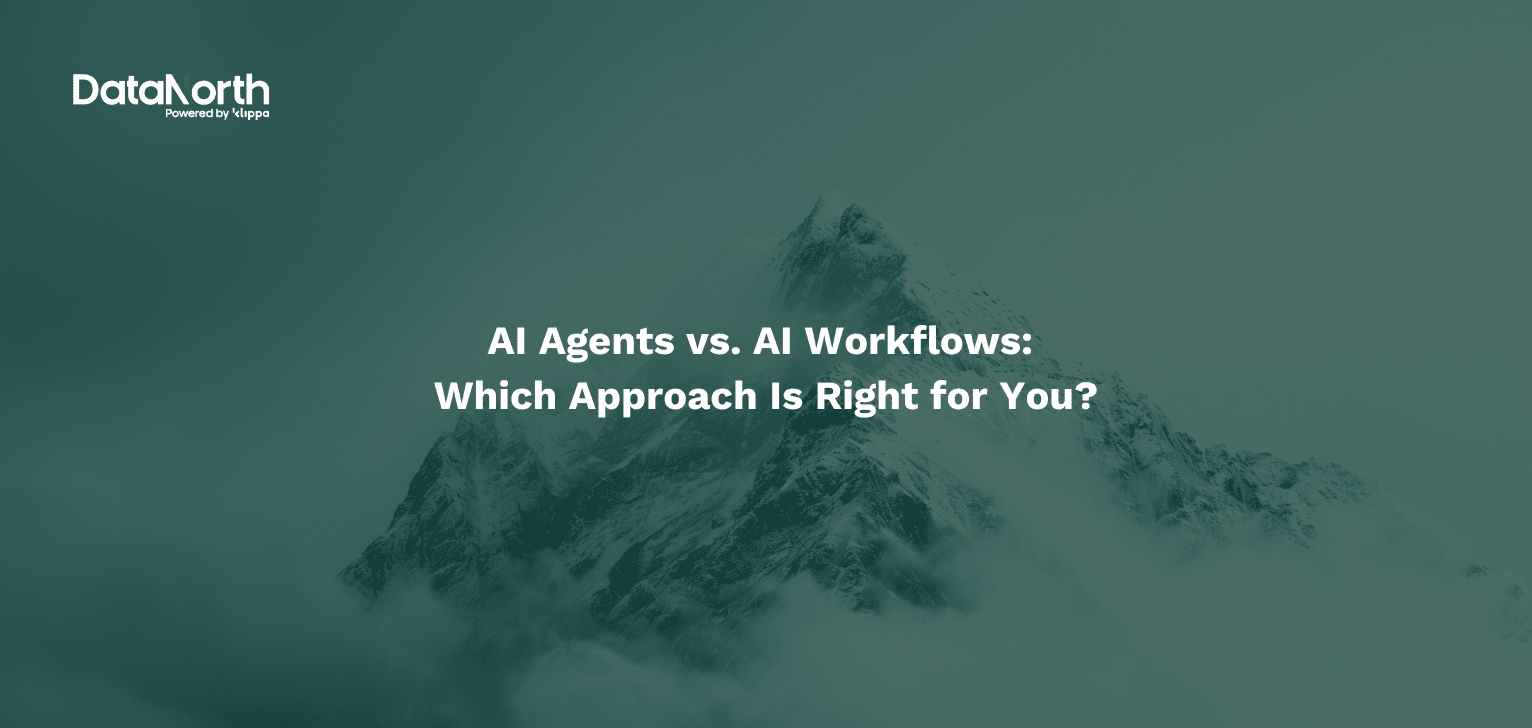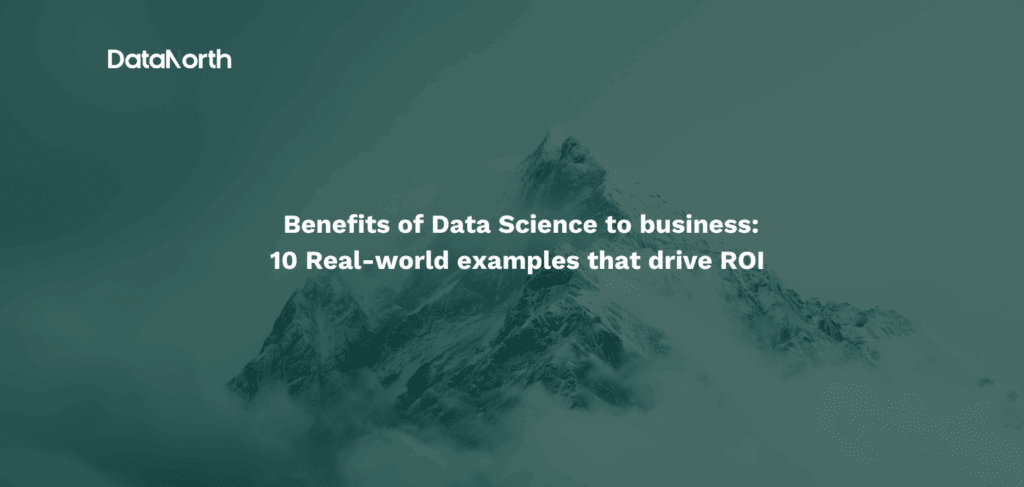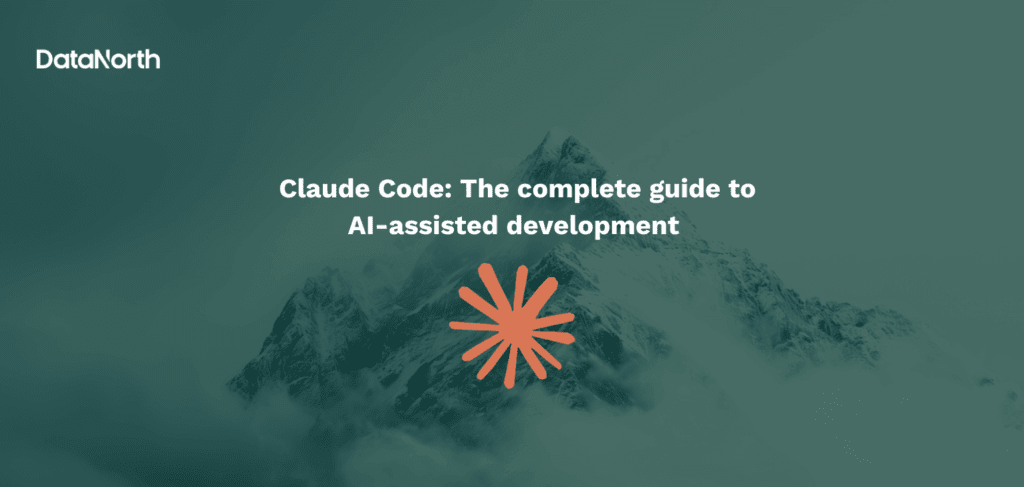Lately, AI Agents are all over the news, but what are they really? And are they actually better than classic AI workflows? Let’s find out!
Here is the thing, the answer isn’t always as simple. AI workflows and AI agents serve different purposes and thrive in different contexts. AI Agents are not always needed and often have more straightforward ways to get the job done. Understanding the differences between them and how they can work together is key to building smart, effective systems.
In this blog, we’re going to break down AI workflows and AI agents, look at their pros and cons, and help you decide when to use them.
What are AI Workflows?
AI workflows are systems that incorporate AI into a predefined, step-by-step process to complete a task. Each step is designed in advance, and the AI performs specific tasks along the way, like classifying text or generating summaries. The process follows a fixed sequence, with each action happening in a set order.
Workflows are ideal for repetitive tasks where the steps don’t change. For example, DataNorth helped JC Electronics implement workflows for tasks like processing incoming customer requests or updating product information. This made it ideal for routine operations where speed and accuracy were critical, such as handling large volumes of support tickets or managing inventory data updates.
The AI doesn’t make decisions on its own, it simply follows the instructions given, generating consistent outcomes. This predictability makes traditional automation great for tasks like expense approvals or invoice processing, where human oversight is minimal and doesn’t need to adapt to new scenarios.
What are AI Agents?
AI agents are more autonomous than workflows. Instead of following a predefined path, an AI agent can engage in autonomous decision making, based on the tools, context and goals it’s given. These intelligent agents can determine the best course of action, choose the appropriate tool, and execute tasks independently.
Think of an AI agent as a problem-solver. For example, in a customer support scenario, the agent can figure out what to do next, search a knowledge base, or use external tools. It has the ability to adapt its approach based on the situation, handling complex tasks and making informed decisions.
Agents are great for tasks that require flexibility, such as handling complex customer queries or researching unknown topics. They can manage open-ended tasks that workflows can’t easily predict. While they offer more freedom and creativity, they also require more resources and may take longer to complete tasks since they often decide their next step along the way and demand human intervention.
AI Workflows vs. AI Agents
Both AI workflows and AI agents can leverage the power of large language models, but they do so in different ways. Each approach has its strengths and weaknesses.
Let’s compare them over important dimensions:
| Factor | AI Workflows | AI Agents |
|---|---|---|
| Cost | Lower operational costs due to predictability. | Higher costs due to dynamic decision making processes. |
| Speed | Faster, with predictable execution and fewer steps. | Slower, as agents may need time to reason and take multiple actions. |
| Flexibility | Limited flexibility, follows predefined paths. | Highly flexible, adapts to changes in input and context. |
| Adaptability | Not adaptable to unplanned situations, limited to predetermined scenarios. | Can adapt to real world applications. |
| Scalability | Easy to scale with predictable steps and resource usage. | More challenging to scale due to multi agents systems. |
| Risk & Control | Offers high control and predictability, easier to monitor. | Less predictable, requires more oversight to avoid errors. |
| Use Cases | Ideal for repeatable, predictable tasks like data processing, approvals. | Ideal for agentic workflows and dynamic challenges. |
When to Use AI Agents vs AI Workflows
Given the characteristics above, how do you decide which approach to use for a given problem?
Here are some practical guidelines and use-case examples:
Use AI Workflows for…
- Repeatable tasks: When the task follows a clear, set sequence each time, like processing invoices or expense approvals.
- High-speed, real-time tasks: For tasks that require quick responses or high volumes of requests, such as autocomplete features or real-time translation.
- Cost-effective or resource-constrained scenarios: If you’re working with limited resources or need to keep costs low.
- Well-defined problem: When you fully understand the task and its steps, workflows are the best choice. A document classification system or a data transformation pipeline are good examples of tasks that work well with workflows.
- Compliance and safety: Workflows are ideal when strict control and predictability are needed, like in regulated industries or for tasks that require consistent, traceable results.
Use AI Agents for…
- Open-ended problem solving: For complex tasks that don’t follow a fixed sequence, like research assistants or troubleshooting where the AI needs to adjust its approach as new information is discovered.
- Context-dependent decision-making: When the next steps depend on real-time results, such as personalized recommendations that require constant adaptation.
- Autonomous data handling: If the task needs pulling in external data or interacting with multiple systems, agents are great. They can decide which actions to take based on available data, like a sales assistant pulling client info from a CRM and crafting personalized messages.
- Learning and adaptation: In situations where the AI must adjust based on feedback or evolving conditions, agents are better. They can improve their approach over time, like in optimization tasks or adapting teaching strategies for a personalized learning experience.
Hybrid Approach
It’s not always an either or choice between workflows and agents. In fact, some of the best systems use a “hybrid approach”.
This is how they complement each other:
- Workflow with agent assist:
You design a mostly fixed workflow for routine tasks but insert an agent at key decision points where things might get complicated. For example, in a customer service process, the workflow can handle standard queries, but if an unusual issue arises, it hands off the interaction to an AI agent to resolve the problem. This approach keeps the system efficient and predictable while still allowing it to handle unexpected situations. It’s like having a support bot that escalates issues to a human when necessary, with the agent stepping in as the “manager.”
- Agent with workflow subroutines:
On the contrary, you could have an agent managing a larger task but delegate well-defined parts of the task to workflows. For example, in onboarding a new employee, the agent oversees the overall process but uses workflows for specific tasks like setting up IT, paperwork, and training schedules. The agent knows when to call these predefined workflows and manages the connections between them. This strategy helps leverage stable, proven processes without wasting time on repetitive work.
- Agent within workflow oversight:
Another approach is to place an agent within a workflow that acts as a checkpoint. The agent attempts a solution, but the workflow checks its output against set criteria. If the agent’s result meets the standards, it continues, if not, the workflow either fixes the issue or triggers another agent attempt. For instance, an agent might write an AI-generated report, and a subsequent workflow could fact-check it, ensuring the final output is reliable.
In many cases, a hybrid approach can offer the best of both worlds, using workflows for predictable tasks and agents for the more complex, unpredictable ones. This way, you can ensure efficiency while still allowing for flexibility when needed.
Time to Take Action
As AI evolves, agents will become even more capable. However, the goal is not to use the most advanced technology, but to solve business problems effectively and efficiently.
At DataNorth, we help organizations build AI systems that fit their goals, infrastructure, and constraints. Whether you’re starting from scratch or optimizing an existing process, we can guide you through selecting and combining the right approaches.
You can start small with AI Workflows for tasks like automating customer service responses, processing RFQs or handling incoming orders. Or taking a step further with AI Agents that can monitor your CRM leads and send personalized outreach, keep your inventory data aligned across multiple platforms or find unusual patterns in your operational or financial data.
No matter your starting point, we’ll help you with practical and scalable AI solutions tailored to your business.






